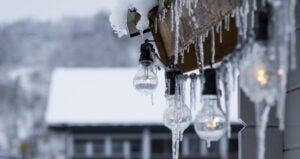How to Winterize Your Plumbing: Preventing Cold-Weather Disasters

Winterizing your plumbing might sound like a chore, but trust us – a little prep now can save you from a major headache later.
If you can see frost on the inside of your pipes, you have got a freezing issue. Pipes are tough, but they are not invincible. Check for any visible cracks or leaks. When water freezes, it expands, which can lead to cracks in the pipes.
What if the damage is not visible? Imagine waking up to a burst pipe on a frosty morning, not knowing where to look. That’s when trouble starts. Before we dive into the details of how to winterize your plumbing, let’s take a look at how to spot frozen pipes:
Signs of Frozen Pipes
Frosty Exterior
take a closer look at your pipes. If they are looking frostier than Olaf on a ski trip, it’s a red flag. Frost on the pipes means they are getting colder than they should, and that’s a warning sign that they might crack at any moment.
No Water Flow
You turn on the tap, and all you get is a trickle or, worse, nothing. That’s your pipes giving in to the freeze. When water stops flowing, it’s time to investigate before you find yourself in an unintentional winter hydration challenge.
Unsettling Odors
That funky odor from your drains indicates that the pipes have frozen. This usually means there’s a blockage that is causing unpleasant smells to waft through your home.
Strange Sounds
Pipes are generally quiet, but if you start hearing weird noises, it’s time to pay attention. Gurgling, banging, or whistling can be signs of trouble. It could mean there’s water trapped somewhere it shouldn’t be, like a frozen nook or cranny.
Bulging Pipes
If you notice any unusual swelling or bulging in your pipes, it could mean that the water inside is expanding as it freezes. This is a serious warning sign, and you should act fast before your pipes throw a frosty fit.
Drooping or Sagging
If your pipes are sagging, it’s a sign that they might be carrying the weight of ice. When pipes freeze, the added pressure can cause them to droop.
High Utility Bills
Did your heating bill just hit the stratosphere? While winter usually means higher energy costs, a sudden and dramatic increase could signal that your heating system is working overtime to keep frozen pipes at bay.
Reduced Water Pressure
If your once-powerful shower feels more like a gentle mist, your pipes might be trying to tell you something. Reduced water pressure can be a sign of frozen pipes or potential blockages.
Now that you know where to look for potential plumbing problems in winter, let’s discuss how to winterize your plumbing in Old Bridge:
How to Winterize Your Pipes
Insulate
While you are bundled up in your favorite winter sweater – all cozy and warm, your home’s pipes are shaking with cold. Why not give them a little comfort, too?
Insulating your pipes not only prevents them from freezing but also maintains their efficiency, making them last longer. Head over to your local hardware store and grab some pipe insulation. It’s a small investment that can save you big bucks in potential repairs.
Seal Those Leaks
Drafty windows and doors not only make your heating bill skyrocket but also wreak havoc on your plumbing. Inspect your home for any leaks and seal them up tight. Weatherstripping or caulk can patch up those gaps and keep the cold air out.
Disconnect and Drain Your Hose
If you are a gardening enthusiast and have been diligently watering your plants, it’s time to bid farewell to the garden hose. Disconnect it and let any residual water drain out. Storing it indoors will prevent it from freezing and cracking.
Give Your Water Heater Some Love
Your water heater works hard year-round, but it deserves some extra TLC in the winter. Flush it out to remove sediment buildup, which can reduce its efficiency.
Check the pressure relief valve to ensure it’s working correctly. This simple step can extend the life of your water heater and keep your showers warm all winter long.
Set Your Thermostat Right
We get it – you want to save on heating costs. However, setting your thermostat too low, especially when you are away, can lead to frozen pipes. Keep your home at a consistent temperature, even if you are heading out for a winter getaway. It’s a small price to pay for the peace of mind that your plumbing in Spotswood is protected.
Open Cabinet Doors
This might sound a bit strange, but trust us, it works. Open the cabinet doors under your sink to allow warm air to circulate around the pipes. It’s a simple and effective way to prevent them from turning into ice sculptures when the temperature drops.
Don’t Forget the Outdoor Faucets
Outdoor faucets are often overlooked during the winterization process. Disconnect and drain any hoses attached to them, then shut off the water supply to the outdoor faucets. Use an insulated faucet cover to give them extra protection against the cold.
When in doubt, call in the pros. A professional plumber can inspect your plumbing system, identify potential issues, and offer solutions. It might seem like an added expense, but it’s a small price to pay compared to the cost of dealing with burst pipes.
Knowing where your main water shut-off valve is can be a real lifesaver if the worst happens, and your pipes freeze. If a pipe bursts, turning off the water supply quickly can minimize damage. Take a moment to locate it and ensure it’s in good working order. Then, call emergency plumbing services.
Don’t Let Winter Freeze Your Pipes – Act Now!
The importance of maintaining warm pipes cannot be overstated in the chilly winter months. Frozen pipes can lead to many issues, ranging from inconvenient disruptions to potentially costly damages. However, there’s good news: Bob Hoegler Plumbing LLC. is here to ensure that your pipes stay operational throughout the winter season.
From preventative measures to emergency solutions, we offer comprehensive services to address all your winter emergency plumbing needs. Whether you are a homeowner or a business owner, we have the expertise to safeguard your pipes from freezing temperatures.
Our friendly and knowledgeable staff are ready to assist you and answer any questions you may have. You can call us at 732.595.2078.
RECENT POSTS
categories
Archives
2024
2023
2022
2021
2020
2019
- December (2)
- November (2)
- October (2)
- September (2)
- August (2)
- July (2)
- June (2)
- May (2)
- April (2)
- March (2)
- February (2)
- January (2)

